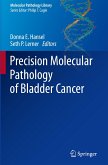The field of underactive bladder is a poorly recognised yet important clinical condition, affecting up to a third of patients over 65. In this book, the authors look at the field of underactive bladder and its presentation, clinical diagnosis, potential etiopathogenesis and treatment.
While the editors address a great deal of background information, they clearly identify that many limitations still exist to clinical diagnosis and urodynamic evaluation, and in particular a dearth of appropriate treatment options. This complex condition needs to be recognized and identified in the routine evaluation and clinical management of patients.
While the editors address a great deal of background information, they clearly identify that many limitations still exist to clinical diagnosis and urodynamic evaluation, and in particular a dearth of appropriate treatment options. This complex condition needs to be recognized and identified in the routine evaluation and clinical management of patients.
"This excellent textbook fills a lack and provides the reader with expert knowledge in the fields of UAB and DU, which are sometimes neglected in clinical practice and research." (European Urology Today, Vol. 29 (4), August-September, 2017)
"This is intended mainly for practitioners and for the scientific community in urology. However, many other individuals will benefit from this book, including primary care physicians, other clinicians, residents, and medical students who have a specialized interest in the underactive bladder. ... The elucidation of all aspects of this diagnosis will lead clinicians to a better treatment plan and care for patients." (Jeanne Llenado, Doody's Book Reviews, February, 2017)
"This is intended mainly for practitioners and for the scientific community in urology. However, many other individuals will benefit from this book, including primary care physicians, other clinicians, residents, and medical students who have a specialized interest in the underactive bladder. ... The elucidation of all aspects of this diagnosis will lead clinicians to a better treatment plan and care for patients." (Jeanne Llenado, Doody's Book Reviews, February, 2017)








